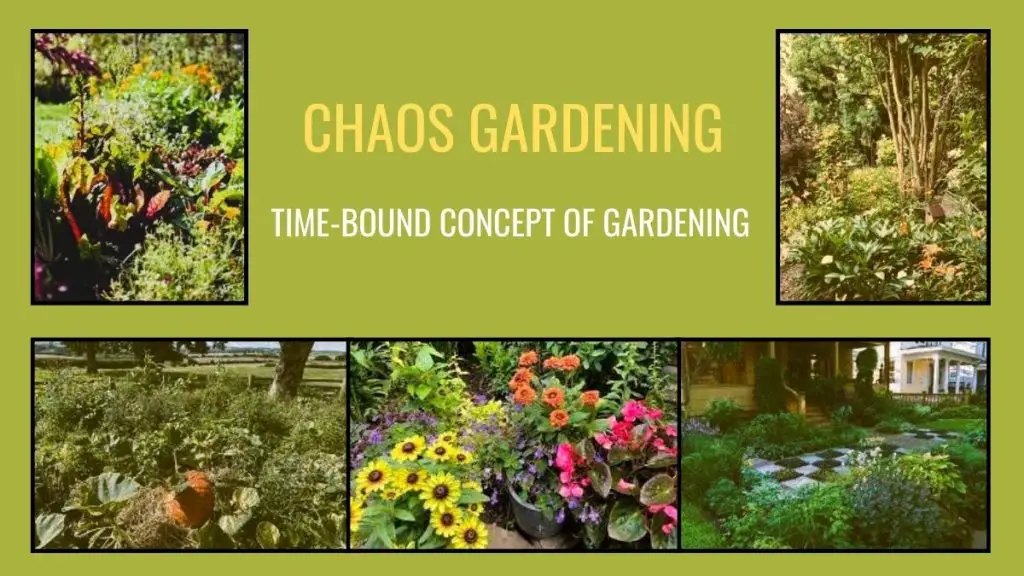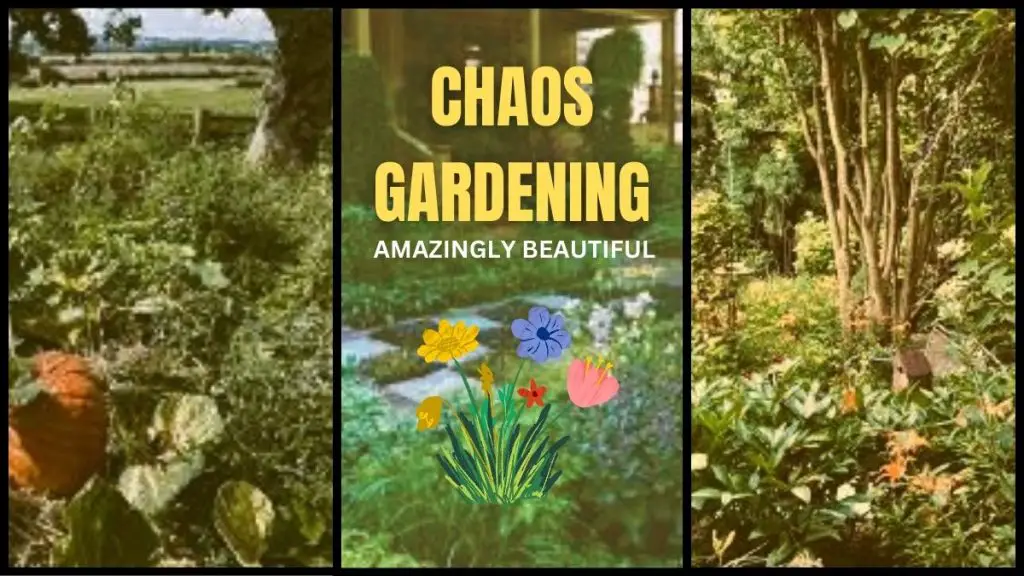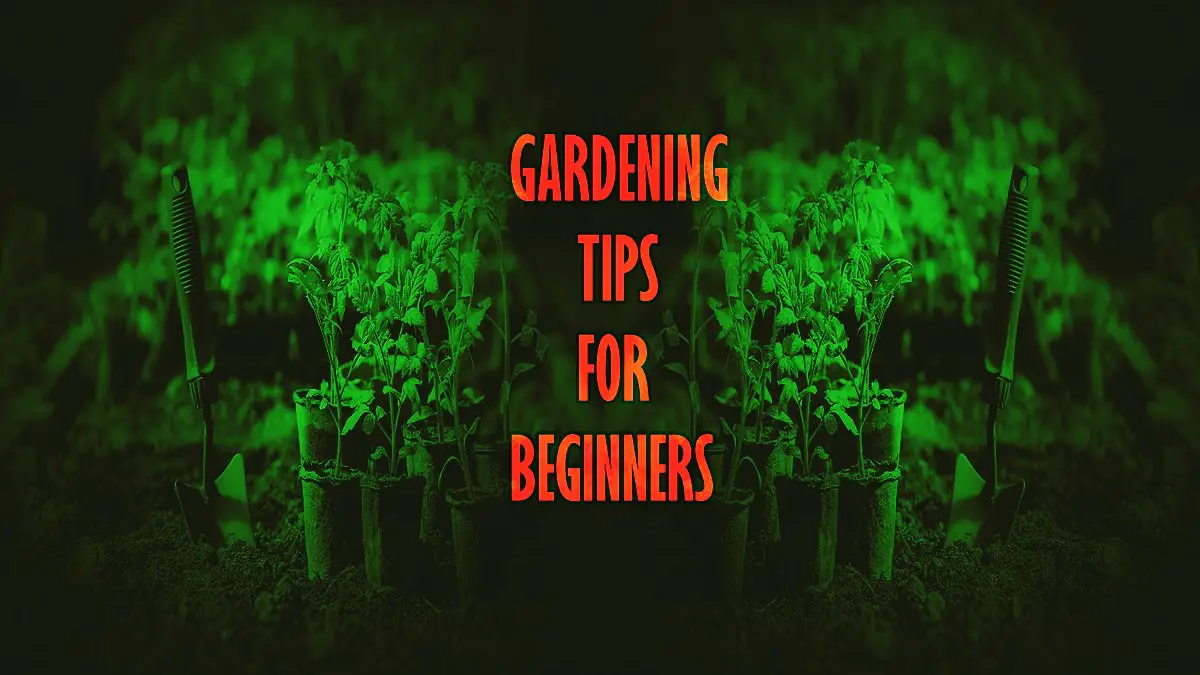At the beginning of 2024, what’s on your mind? A brand new year is here. I’m sure you’re thinking about something new for your garden too. What about the Chaos Garden? There’s a new trend going on, and that’s chaos gardening. Let’s go deep and acquire knowledge of something more about it.
If you are a vibrant nature lover, Chaos Gardening is for you. Additionally, this is an excellent choice if you don’t want to waste all the seeds in a package. It is not gardening or planting in the conventional sense. In actuality, it’s gardening done more naturally. An eco-friendly, non-formal approach to animals.
In this article, we are going to learn about Chaos Gardening, how to create it, which plants are suitable for it, and which animals are going to benefit from it. So, let’s dig deep into cultivars.
Related Article: Best Gardening Tips for Beginners: Cultivate Your Green Thumb
You may also read: The Ultimate Guide to Organic Gardening

Related Article: A Comprehensive Guide to Garden Pest Control Makes Garden Beautiful
Related Article: There are No Gardening Mistakes, Only Experiments: Grow Boldly!
You may also read: The 11 Best Gardening Tool Sets of Recent Times
Chaos Gardening Exploration with Details
Nowadays, chaos gardening is a process of gardening with natural impact and low maintenance that is loved by many gardeners. Here, we are going to discuss chaos gardening which is a fantastic way of gardening with natural wild flavor.
What does Chaos Gardening Entail?
Anyone may try chaos gardening, which is a simple, hassle-free way to use up unused seeds. It is a carefree, unplanned style of gardening that ignores rigid rules and accurate garden design. Just gather up all of your unused seed packets and scatter the seeds throughout the garden to see what takes.
The outcomes of chaos gardening are dynamic, akin to natural wildflower patches or classic cottage gardens, with everything mixed together. The end product should be a naturally stunning garden area that is teeming with color, texture, and scents that will draw butterflies, bees, and other beneficial insects to your yard.
What is the Appearance of the Chaos Garden?
This method of planting seeds works well for any kind of plant, including grasses, fruits, vegetables, and flowers. You can scatter the seeds around a few blocks, or you can use the whole yard as a wild and beautiful chaos garden. The key is to let go of expectations and let nature do her job.
Tell me, folks, how can you do gardening?
In my perspective, gardening should be about having fun and removing stress, which is what chaos gardening is, also known as intuitive or instinctive gardening.
Even though anarchy could seem like everything goes, it’s still wise to plan your ideas for the area, whether they have to do with color, function, or organization. When it comes to gardening, there is no one-size-fits-all approach, and every packet of seed you own may have slightly different preferences.
Planning for Starting a Chaos Garden
In a chaotic garden, seeds are dispersed at random, letting nature pick how they will develop rather than placing them in rows or other planned arrangements. It’s an approach to embracing uncertainty and giving off a wilder, more alive look.
Although you might not need to plan the design, you still need to prepare for the next steps. If you decide to do so, here are some guidelines to follow:
Spot for a Chaos Garden:
For a Chaos garden, you must choose a location. It could be an entire block or a corner set aside for this specific use. Despite complimenting the rule-free environment, it is necessary to examine how much sunlight and rain your garden receives, as well as the soil.
Soil preparation:
Since most seedlings require rich, well-draining soil to sprout and survive, soil quality is also something to consider. To prepare the soil, use a shovel to flip it over or a rake to simply scratch up the top few inches. A couple of inches thick layer of compost can be applied.
Seed collection:
When it comes to choosing plants, there’s no right or wrong answer—just make sure the selections you make will complement the way you envision the area. Consider the best combinations of height, spread, and color, then create little mixtures of complimentary plant blends to scatter about.
Plantation:
Gathering all of your remaining seed packets, placing them in a bowl, and then sprinkling them all over the ground is one very precise example of chaos gardening. Plant single packages of seeds in a single huge area, or scatter seeds throughout your planting beds where there are bare spots. Larger seeds can be planted first, then smaller ones can be sprinkled on top, or you can combine all the seeds and sow at the same time. Everything is acceptable!
Maintenance:
Without just the minimum of fundamental maintenance, nothing can grow. After being sown, the seeds require frequent irrigation. It could be necessary to thin the seedlings after they start to grow in order to avoid crowding.
An Educational Experience:
The interesting part will come after the seeds emerge. It will show which plants come out and which don’t. Letting nature take the lead is part of what makes this method so enjoyable. Basically, it all comes down to accepting the uncertainty and not being scared of failing.
Is Chaos Gardening More Approachable to Wildlife?
Insects and birds may be drawn to the chaos garden because it may resemble the wild environment. When more birds are given shelter there, it will be more attractive to them. Certain flowers have excellent nectar supplies, which can attract pollinators. And this might lead insects to hibernate. If anything goes on, you should welcome the full surprise of Mother Nature.
The Environmental Benefits
With its challenging and interwoven relationships, chaos gardening accepts that nature is fundamentally chaotic. It’s easier to go with the flow of nature. That’s how, with little assistance, the chaos garden fosters equilibrium and harmony in a sustainable environment.
Do you want to know the benefits of the Chaos Garden?
Let’s check in:
- It combines a wide range of plants with a multitude of helpful microbes.
- Diverse ecological functions are offered by different plants.
- An ecosystem with greater diversity is more robust.
- It enhances the fertility of the soil.
- It encourages the use of native and wild plants.
- Native plants can be added to disorderly gardens to mitigate excessive climate change.
- It encourages eco-friendly gardening techniques.
- It provides a friendly home for many different kinds of wildlife.
As a matter of fact, all these benefits of chaos gardening gives the inspiration of doing this types of gardening. Basically, Chaos gardening is a magnificent way of gardening that loved by gardeners who are usually want to do low-maintenance gardening tasks with a natural impact on the garden.
To know more about Chaos Gardening, Go Here>>>
Related Article: The Ultimate Guide to Choosing the Right Aeroponic Tower Garden
You may also read: Creating a Vertical Oasis: The Beauty of Hydroponic Tower Garden
The Last Speech
The concept of chaos gardening transcends simple gardening techniques and provides a distinct approach to home renovation by appreciating the unpredictable character of nature and the delight of plant cultivation.
The idea behind chaos gardening is to accept the diversity of nature and let the garden take its own course. It continues to be a means of fostering a beautiful, ecologically sound landscape while adjusting to changing times and reestablishing a connection with nature.
Beyond the limitations, chaos gardening encourages us to approach life with awe, versatility, and an openness to the unknown. It’s the rich quilt of life that emerges when we allow nature to take its course—not perfection, but beauty.
Related Article: The 14 Best Tips For Designing A Small Garden
Related Article: The Ultimate Guide to Garden Tool Organization: Maximize Efficiency
You may also read: Unveiling the Beauty of a Hidden Garden
- Indoor Plant Care Tips for Enthusiasts: Lush Oasis Secrets - July 6, 2024
- The Best Electric Garden Tools: Maximize Your Green Thumb! - June 23, 2024
- Exploring the Diversity of Rock Garden Plants for Unique Gardens - June 10, 2024




Pingback: The 14 Best Tips For Designing A Small Garden - Dwell Gardens
Pingback: The Ultimate Guide to Garden Tool Organization: Maximize Efficiency - Dwell Gardens
Pingback: The Top 10 Best Pruning Saws for Gardeners - Dwell Gardens
Pingback: A Comprehensive Guide to Garden Pest Control Makes Garden Beautiful - Dwell Gardens
Pingback: The Ultimate Guide to Organic Gardening - Dwell Gardens
Pingback: The Ultimate Guide to Choosing the Right Aeroponic Tower Garden - Dwell Gardens